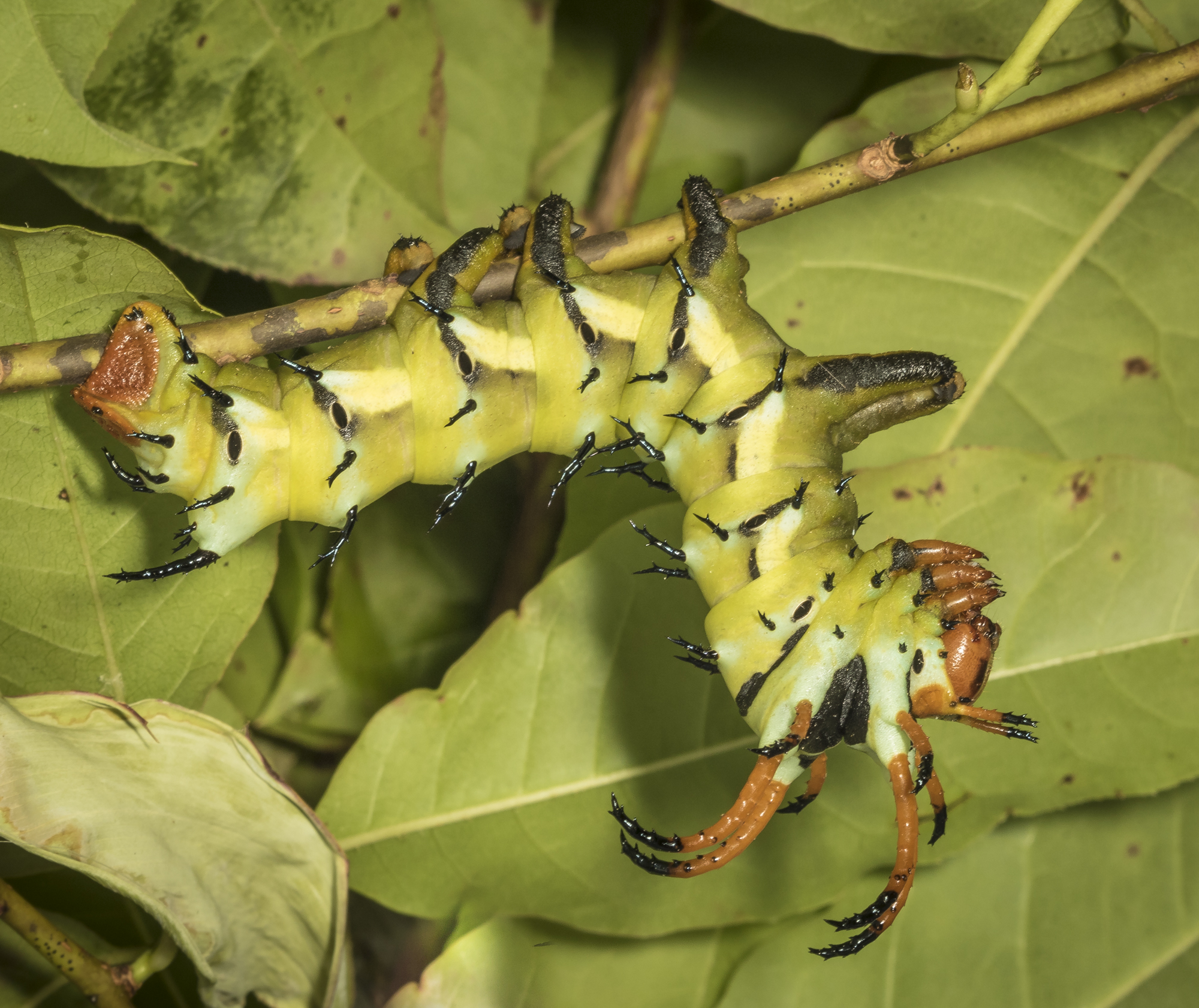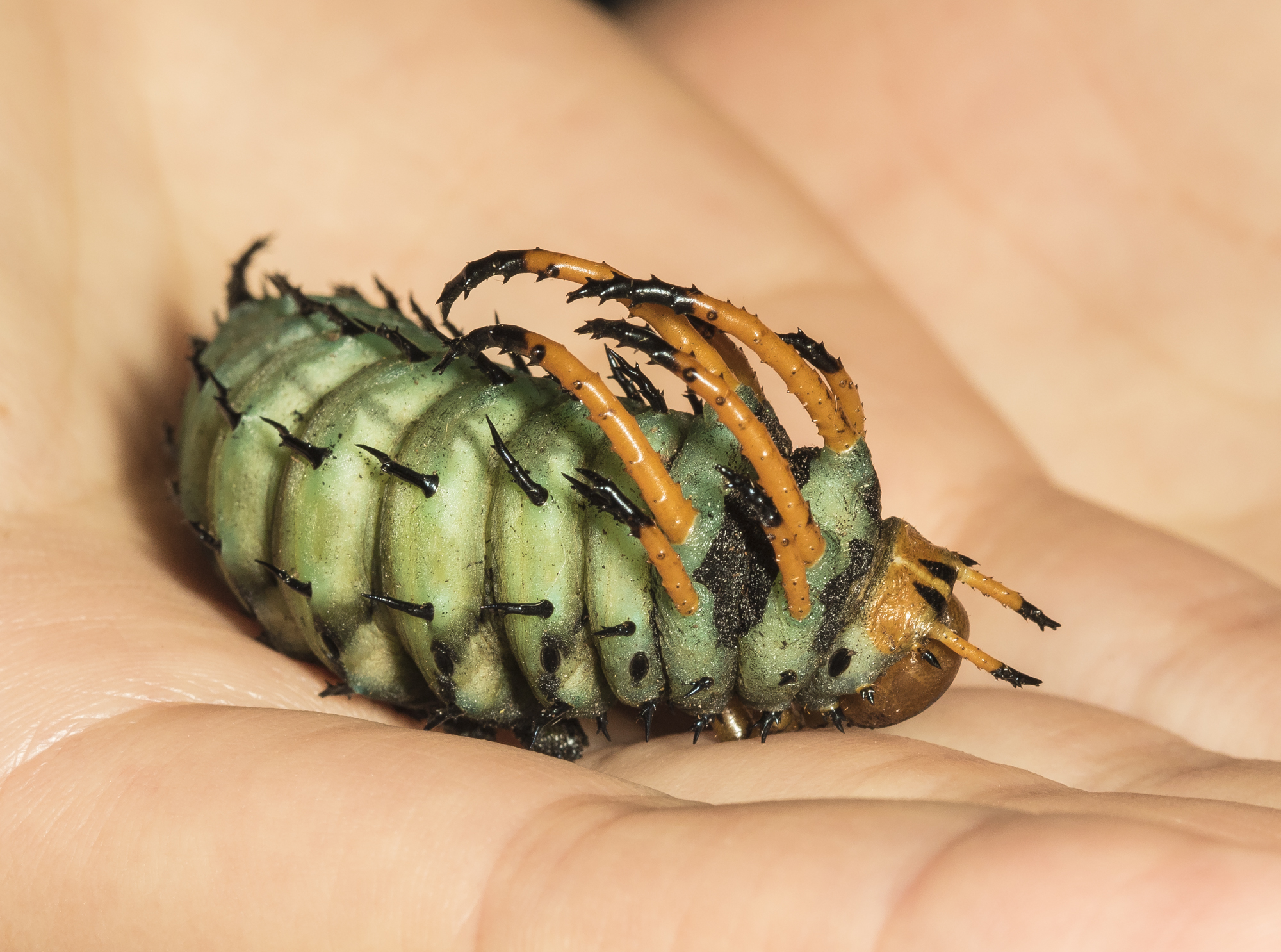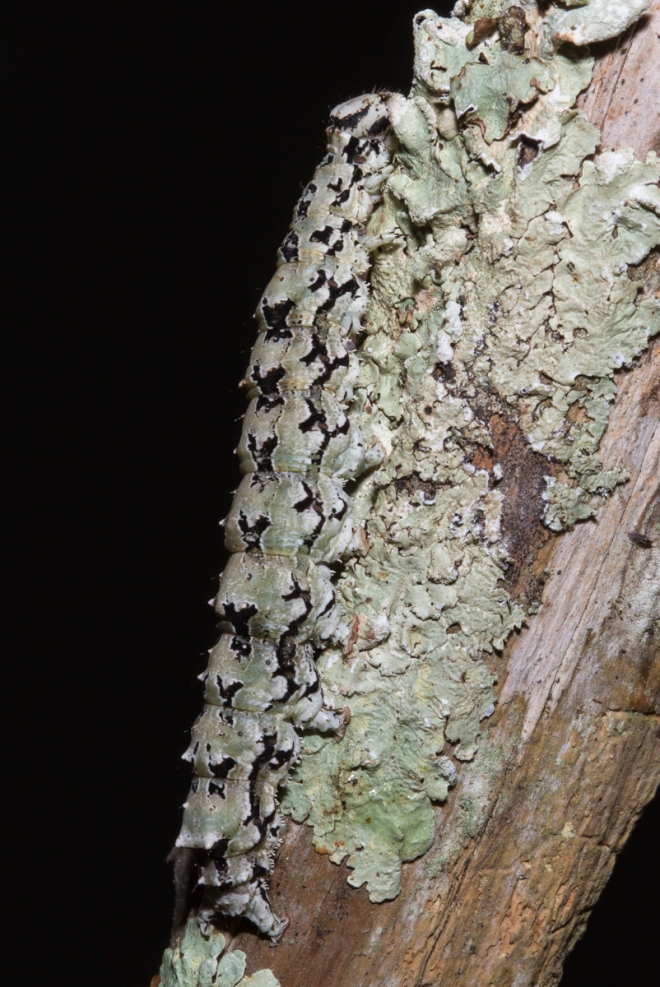It’s the horns of a dilemma, no question about it.
~Steven Jeffrey
Melissa needed a few caterpillars for a teacher workshop this week, so I went out the other night with our UV flashlight to scan the vegetation around the house. A reminder that many species of caterpillars glow under UV light at night, making them much easier to spot. It was slim pickings but I did see one sphinx moth larva (aka horn worm, due to the presence of a spike on the posterior end). It had just molted so I didn’t want to disturb it. Its size and behavior (feeding on the underside of a leaf) gave the impression of a Walnut Sphinx caterpillar, a species I have found several times in our yard. Plus, when I glanced at the host plant and saw the compound leaves, I assumed it was a hickory, one of the hosts of Walnut Sphinx larvae. I noted the location and headed inside, hoping the caterpillar would still be there in the morning.

When I went out the next day to retrieve it, I saw that the sapling was not a hickory, but an ash, and that the larva was not a Walnut Sphinx…but, what is it? I had not paid close attention to detail in the glow of the UV light and the pattern and colors were not yet evident in the freshly molted caterpillar. I took a few quick photos and went inside to search my well-worn copy of Wagner’s Caterpillars of Eastern North America. There are six species of horn worm larvae that feed on ash so it made the search a bit easier. None of the images matched the bold pinkish splotches along the sides of my caterpillar, but reading the descriptions helped me decide that this beauty is a Waved Sphinx caterpillar, Ceratomia undulosa. They are quite variable as larvae, with most being green overall, others pink and yellow, or some combination.

But they all tend to have the textured pinkish horn and black dots on the anal plate (the hardened area on the top of the last abdominal segment). A quick search online (BugGuide.net) showed the diversity of this species’ caterpillar colors and confirmed this variation for a Waved Sphinx larva. I am guessing this is a 4th instar, so it has some growing to do before its final stage. Just goes to show, never assume you know what you are seeing without paying attention to the details. But, no matter the name, it is a stunning caterpillar and a joy to discover just outside our home in the woods.












































